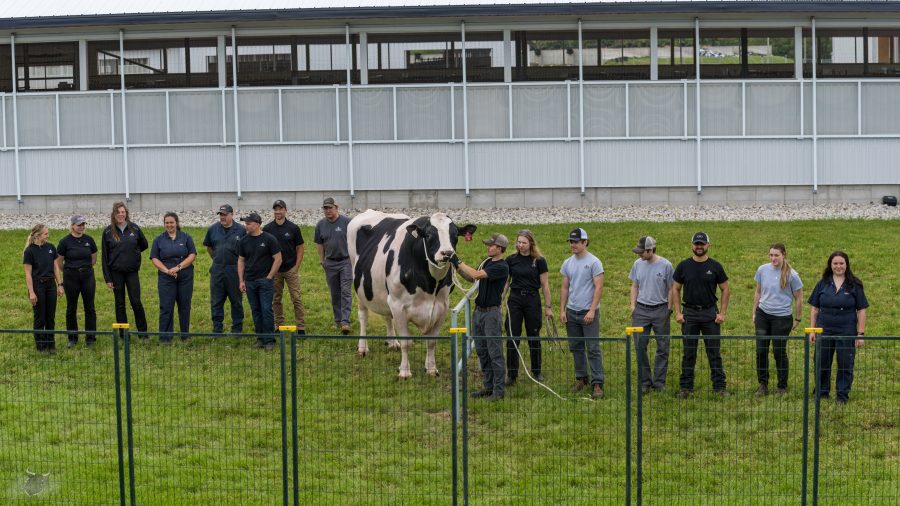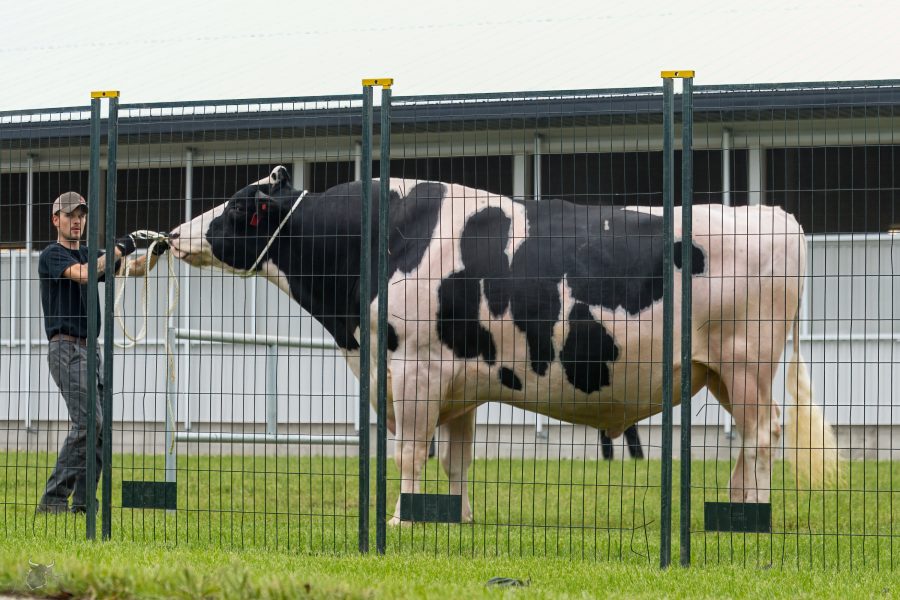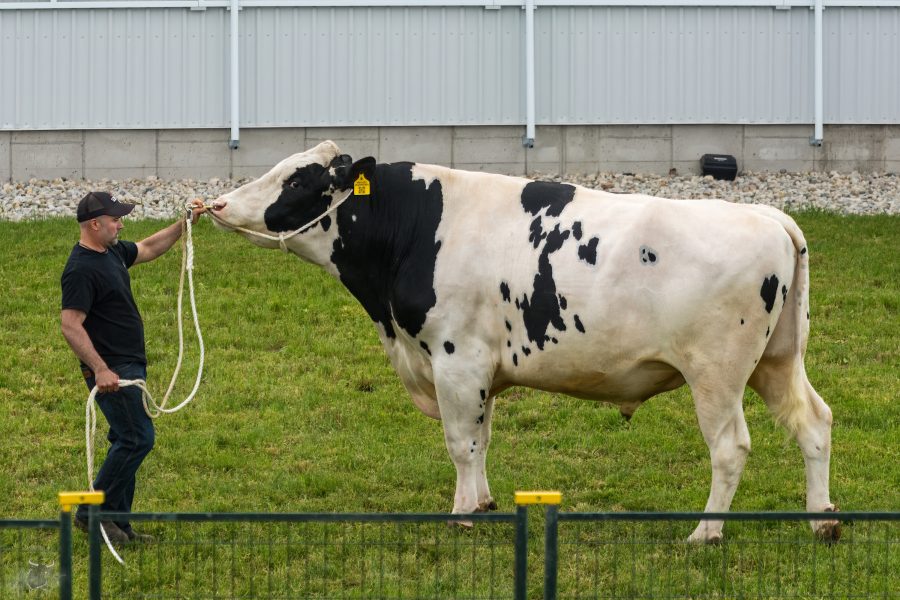Uncover the essential strategies to future-proof your Beef on Dairy program. Are you prepared to excel in an unpredictable market? Master the art of adaptation and secure your success.
The merging of beef and dairy genetics is more than a trend; it is a beacon of innovation in the continuously expanding livestock business. This developing crossbreeding method can combine the qualities of beef and dairy cattle, resulting in increased output and carcass quality. However, it is the journey of overcoming the hurdles of this invention that will pave the road for long-term success, pushing us all to push the limits of what is possible.
Crossbreeding in the beef-dairy industry has the potential to combine the greatest features from both fields, but it also introduces complications. As this junction gathers traction, industry participants must plan their programs for the inherent volatility. Discover practical ways for navigating hurdles and maximizing potential in beef on dairy crossbreeding initiatives.
From Necessity to Innovation: The Evolution of Beef on Dairy Crossbreeding
Crossbreeding between beef and dairy has a long history, beginning in the mid-20th century to increase milk output. Market needs changed throughout time, necessitating a trade-off between milk supply and meat yield.
Initially, beef genetics were introduced into dairy cows to enhance carcass quality without impacting milk output. Successful examples include crossing breeds like Angus and Hereford with Holstein cows to generate hybrids with acceptable meat quality and high milk outputs.
Technological developments in the 1970s and 1980s, notably artificial insemination, hastened crossbreeding attempts. This resulted in better genetic selection and data collecting, revealing optimum crossings and management approaches.
Challenges included market opposition to hybrid meat, which was considered inferior, and unpredictability in progeny performance. Refined breeding aims and improved husbandry procedures helped resolve these difficulties over time.
Lessons from history highlight the necessity of rigorous genetic selection and improved reproductive technology. Modern beef on dairy businesses needs comprehensive performance data and a market-oriented strategy to navigate uncertainty and maximize possibilities.
Mastering Economic Factors: A Pathway to Profitability and Sustainability
| Year | Initial Investment | Revenue | Net Profit | ROI (%) |
|---|---|---|---|---|
| 1 | $50,000 | $20,000 | -$30,000 | -60% |
| 2 | $20,000 | $40,000 | $20,000 | 100% |
| 3 | $10,000 | $60,000 | $50,000 | 500% |
| 4 | $10,000 | $80,000 | $70,000 | 700% |
| 5 | $10,000 | $100,000 | $90,000 | 900% |
Understanding the economic dynamics influencing beef on dairy programs is critical for maintaining profitability and sustainability in a fluctuating market. First and foremost, market trends must be carefully evaluated. Rising consumer demand for high-quality meat has increased pricing and possibilities for dairy farmers. However, this demand varies with economic situations, consumer tastes, and global trade regulations, demanding a more complex approach to market research.
| Cost/Benefit | Description |
|---|---|
| Cost: Initial Investment | The upfront expense required for acquiring high-quality beef genetics and implementing crossbreeding programs, including the cost of technology, infrastructure, and labor. |
| Cost: Maintenance & Feeding | Ongoing costs related to crossbred cattle care, nutrition, and health management may differ from pure dairy herd management expenses. |
| Benefit: Higher Market Prices | Crossbred beef x dairy cattle can command premium prices in the market due to their higher meat quality, potentially leading to increased revenue streams. |
| Benefit: Improved Efficiency | Utilizing crossbreeding can result in animals with superior growth rates and feed conversion ratios, enhancing overall herd efficiency and productivity. |
| Cost: Genetic Management | Ensuring the optimal selection of genetic traits requires detailed record-keeping and skilled management, entailing additional costs for expertise and resources. |
| Benefit: Diversified Product Lines | Engaging in beef x dairy programs allows producers to diversify their product offerings, potentially reducing market vulnerability and dependency on a single revenue stream. |
A cost-benefit analysis is another important consideration. The initial expenditures in genetics, feed, veterinary care, and infrastructural improvements might be significant. However, when handled properly, the benefits might outweigh the drawbacks. Crossbred animals, for example, often demonstrate hybrid vigor, which may lead to increased efficiency and carcass value when compared to purebred counterparts. Increased value may balance greater initial expenses, resulting in a positive return on investment.
Comprehensive financial planning tactics are beneficial and required for a beef-on-dairy operation’s long-term viability and growth. Precise planning, forecasting, and cash flow management are needed to deal with economic unpredictability. We may efficiently shift risk while protecting profits by using mechanisms like forward contracts and futures markets to hedge against price volatility. Diversifying income sources, such as value-added goods or agritourism, may improve financial stability and provide more control over success.
Dairy farmers should maximize profitability and reduce risks by remaining informed about market developments, performing cost-benefit evaluations, and implementing strategic financial planning. Such preventive actions guarantee that these businesses stay robust and flexible, ready to prosper in an uncertain future.
Genetic Selection: The Foundation of Progressive Beef on Dairy Crossbreeding
Genetic selection is the foundation of successful beef on dairy crossbreeding. It is about recognizing and passing on exceptional features across generations.
Growth rate is essential since it influences manufacturing efficiency and time to market. The Angus and Charolais breeds thrive here, making them excellent for maximizing output timeframes.
Feed efficiency is another crucial element. Efficient feed conversion lowers costs and increases profitability. Breeds like Hereford and Simmental, noted for their high feed efficiency, may significantly improve these qualities in crossbreeding programs.
Meat quality influences market value, such as marbling, softness, and taste. Breeds like Wagyu and Piedmontese, known for their outstanding meat quality, are crucial. Their genetic contributions improve product quality and market position.
A successful crossbreeding approach utilizes modern genetic techniques and data analytics to improve results. Genomic selection and marker-assisted approaches enable accurate breeding choices.
Health and Nutrition: The Cornerstones of a Thriving Beef on Dairy Program
A successful Beef x Dairy program relies heavily on maintaining good health and nutrition. We can ensure our cattle prosper by providing them with a suitable diet and preventative treatment, immediately increasing output. Neglecting these regions might raise hazards, including disease outbreaks and diminished reproductive efficiency, affecting revenue. By putting health and nutrition first, we can ensure we do everything possible to safeguard our assets.
An optimum feeding approach begins with an analysis of crossbreds’ particular demands. Feeding programs should be adapted to individual metabolic needs, ensuring a diet rich in essential proteins, vitamins, and minerals. Use high-energy grains, excellent forage, and vitamins to compensate for any shortfalls.
Regular health monitoring and preventative care are essential. To prevent hazards, adhere to vaccination schedules and use biosecurity measures. Engage a professional veterinarian to evaluate herd health and recommend appropriate measures.
Animal welfare increases production, including stress management, sufficient housing, and compassionate treatment. You treat health and nutrition as interrelated, resulting in a strong foundation for maintaining productivity and mitigating hazards. This combination of diet and proactive health management strengthens your program against future uncertainty.
Integrating Sustainable Practices: The Moral and Strategic Imperatives for Beef on Dairy Programs
Integrating sustainable agricultural methods into dairy operations is essential for long-term sustainability and ethical considerations. A comprehensive resource management approach may help producers lessen their environmental effects. Implementing rotational grazing systems, for example, improves soil health, lowers erosion, and increases biodiversity, resulting in better pasture usage and healthier livestock.
Water management is similarly essential. Water conservation techniques such as drip irrigation and rainwater collection may considerably reduce use. Advanced manure management techniques further limit nutrient runoff, protecting local waterways and maintaining ecological equilibrium. Using renewable energy sources like solar or wind power reduces greenhouse gas emissions and operating expenses over time.
Continuous improvement of these procedures is essential. Continuing education and adaptive management are critical for achieving regulatory obligations and customer expectations. Monitoring animal health and environmental parameters allows for data-driven choices, supporting sustainability. These solutions lower the environmental impact while increasing the economic resilience of cattle and dairy operations.
Embracing Technological Advancements: A Paradigm Shift in Modern Beef on Dairy Programs
Technological innovations have transformed cattle and dairy programs, improving accuracy and efficiency. Notably, advances in breeding technology, such as genomic selection and sophisticated reproductive procedures like artificial insemination (AI) and embryo transfer (ET), have transformed genetic enhancement. These techniques provide pinpoint precision in detecting and propagating favorable features, enhancing herd health and performance.
Data analytics are critical for informed decision-making in cattle and dairy operations. Collecting data on animal health, growth rates, feed efficiency, and environmental factors may reveal trends, forecast results, and maximize resources. Farms that use data analytics have a competitive advantage by promptly adjusting to market needs, increasing animal care, and enhancing economic performance.
Farm management software has become indispensable in contemporary agriculture, enabling complete monitoring of farm operations ranging from inventory and labor management to financial planning and regulatory compliance. Digital technologies simplify regular operations, allowing manufacturers to prioritize key objectives and continual development. Furthermore, incorporating IoT devices and sensors allows for real-time monitoring, which improves the efficiency and resilience of beef and dairy operations.
To summarize, technology plays a critical role in cattle and dairy operations. Breeding technologies, data analytics, and farm management software contribute to the industry’s increased productivity, sustainability, and flexibility. These changing technologies will remain critical to cattle and dairy operations’ long-term viability and performance.
Fortifying Stability: Comprehensive Risk Management Strategies for Beef on Dairy Programs
Risk management is critical to the resilience and success of any Beef on Dairy enterprise, particularly under unexpected settings. A complete strategy, including insurance, diversification, and contingency planning, may reduce dangers and improve stability.
Insurance is a crucial safety net in the fragile agriculture industry. Livestock insurance covers losses caused by illness, calamities, or other unanticipated occurrences, while crop insurance protects against low harvests. Partnering with specialist insurance providers guarantees that customized plans give financial protection while ensuring continuity even under unfavorable circumstances.
Diversification is essential for risk reduction, both genetically and operationally. Incorporating several genetic lines improves herd resilience and performance. Diversifying revenue sources, such as crop farming or specialty markets for beef and dairy products, helps mitigate market swings, promote innovation, and boost profitability.
Effective contingency planning entails anticipating interruptions and developing appropriate solutions to minimize effect. This covers methods for disease outbreaks, supply chain disruptions, and labor shortages. Regular updates and embedding these strategies into the operational culture guarantee that emergencies are handled quickly and coherently. Using data and technical tools for predictive analytics helps with early danger identification and proactive risk management.
A robust risk management framework combines these factors, resulting in a resilient Beef on Dairy program that can thrive unpredictably. Prioritizing insurance, diversifying, and building detailed contingency plans enable farmers to manage the agricultural terrain confidently and carefully.
Charting the Future: Innovations, Challenges, and Strategic Adaptations in the Dairy Industry
The cattle and dairy business is transforming significantly due to technological breakthroughs, changing customer tastes, and environmental laws. Precision agricultural systems like AI, machine learning, and blockchain are used to improve herd management, genetic selection, and supply chain transparency. These technologies promise to improve operational efficiency and sustainability.
These prospects, however, are not without their obstacles. Stricter restrictions regarding sustainability and animal welfare will need novel compliance solutions. Climate change provides a danger that requires adaptable methods to ensure fodder availability and animal health.
Rising consumer demand for ethically produced and environmentally sustainable beef is both possible and a problem. Aligning with these expectations may result in higher expenses, but it also provides access to premium markets.
Stakeholders must be proactive, such as doing a SWOT analysis to identify weaknesses and investing in continuous education and technology. Collaboration with industry peers, academic institutions, and regulatory authorities will increase preparation and innovation.
To ensure a sustainable future in the beef and dairy business, embracing technology, following rules, and understanding customer preferences are essential.
The Bottom Line
The use of beef on dairy crossbreeding combines historical need with current ingenuity. Economic sustainability requires a thorough grasp of market dynamics and careful financial planning, while genetic selection ensures a strong stock. Health and nutrition are critical to program viability, and sustainable methods balance moral responsibilities with long-term benefits. Technological improvements provide unprecedented levels of efficiency and accuracy. Robust risk management measures are also required to protect stability from future uncertainty. Examining successful programs offers valuable insights into innovation and strategic foresight.
Managing your beef-on-dairy program requires ongoing study, preparedness, and adaptation. These characteristics guarantee survival and promote a robust, resilient organization. Preparation establishes a firm foundation; flexibility allows quick reactions to difficulties, and constant learning keeps your program at the forefront of industry innovations. These concepts form the foundation of a dynamic, future-proof beef on dairy program.
Key Takeaways:
- Recognize the significance of genetic selection in enhancing productivity and carcass quality.
- Implement comprehensive health and nutrition strategies to ensure the well-being and performance of hybrid cattle.
- Integrate sustainable practices as both a moral obligation and a strategic advantage.
- Embrace technological advancements to streamline operations and improve efficiency.
- Adopt risk management strategies to fortify stability and mitigate uncertainties.
- Draw inspiration from successful beef x dairy programs to innovate and remain competitive.
- Navigate future challenges with an adaptable approach, incorporating the latest innovations and proven strategies.
Summary:
The integration of beef into dairy genetics in the livestock industry is gaining popularity, aiming to improve productivity and carcass quality. However, challenges in crossbreeding remain, such as market resistance to hybrid meat, perceived inferiority, and variability in offspring performance. Rigid genetic selection and advanced reproductive technologies are crucial to navigating these uncertainties. Economic factors and cost/benefit analysis are also essential for profitability and sustainability. Comprehensive financial planning strategies, including budgeting, forecasting, and cash flow management, are necessary for sustaining and scaling a beef x dairy program. Tools like forward contracts and futures markets can transfer risk and safeguard profits. Diversifying revenue streams can enhance financial stability and producer success.
 Download “The Ultimate Dairy Breeders Guide to Beef on Dairy Integration” Now!
Download “The Ultimate Dairy Breeders Guide to Beef on Dairy Integration” Now!
Are you eager to discover the benefits of integrating beef genetics into your dairy herd? “The Ultimate Dairy Breeders Guide to Beef on Dairy Integration” is your key to enhancing productivity and profitability. This guide is explicitly designed for progressive dairy breeders, from choosing the best beef breeds for dairy integration to advanced genetic selection tips. Get practical management practices to elevate your breeding program. Understand the use of proven beef sires, from selection to offspring performance. Gain actionable insights through expert advice and real-world case studies. Learn about marketing, financial planning, and market assessment to maximize profitability. Dive into the world of beef-on-dairy integration. Leverage the latest genetic tools and technologies to enhance your livestock quality. By the end of this guide, you’ll make informed decisions, boost farm efficiency, and effectively diversify your business. Embark on this journey with us and unlock the full potential of your dairy herd with beef-on-dairy integration. Get Started!
Learn more:
- Cornell University Rolls Out Free Entrepreneurship Program for Dairy Innovation: A Breakthrough for Industry Trendsetters
- Navigating the Waves: Dairy Producers Defy Challenges to Keep Barns Full Amid Soaring Milk Prices and Adverse Conditions
- The Impact of Beef-on-Dairy on the Comprehensive Dairy Heifer Debate




















